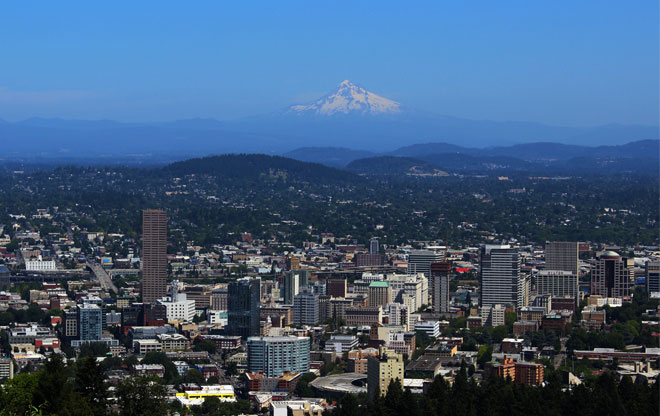
Rising Above
Mt. Tabor Park is visible in this image between the tallest building in the foreground and Mount Hood in the background. The park rises 400 feet above the rest of the city.
Image: Jeff Schnabel
Open Source
The park is surrounded by residential neighborhoods from a range of historical periods, but all surrounding communities invite access into the park through extensive network of trails.
Image: Jeff Schnabel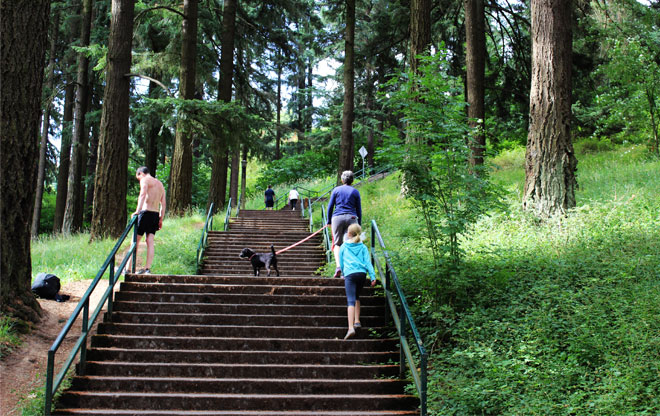
Step by Step
On the north side of the park, a set of steps runs from the mountain's base to the top. These steps are frequently used by runners and climbers for training and fitness.
Image: Jeff Schnabel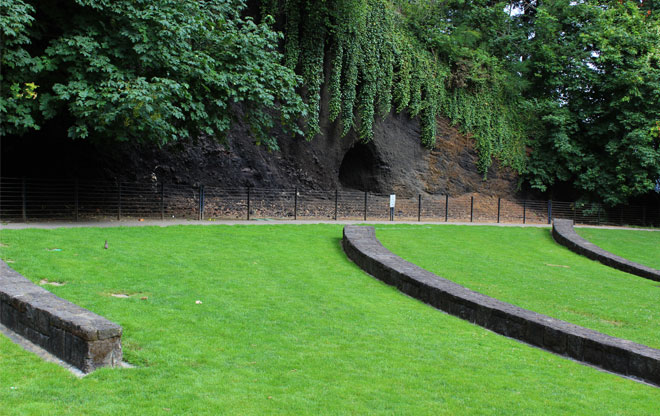
Designed Caldera
The cinder cone park's caldera—which is a crater-like feature usually formed by the collapse of land following a volcanic eruption—has been designed to accommodate all kinds of recreation. It's also a popular location for weddings.
Image: Jeff Schnabel
Explosive Performance
Much of the caldera has been transformed into a performance venue using local volcanic rock as the primary building material.
Image: Jeff Schnabel
Framing Scenes
The caldera does not actually occupy the top of the park. Instead, the apex is forested with large fir trees and occasionally offers dramatic views to Portland, Mt. Hood, and Mt. Saint Helens.
Image: Jeff Schnabel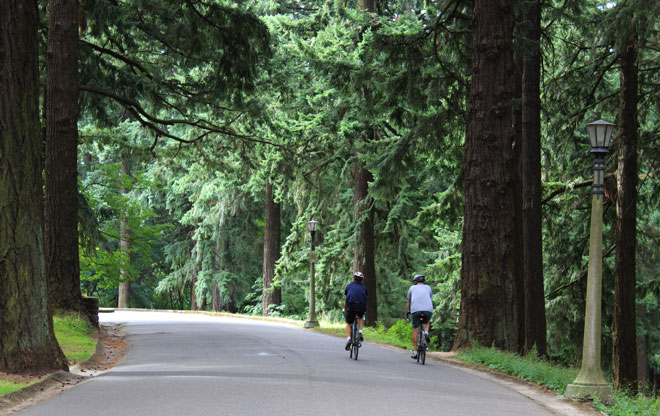
Portland's Longest Beer Garden
The road network in the park is frequently closed to cars to allow bike races, runs, and other events. Each year, for example, the main road is closed to accommodate an adult soapbox derby race, with a five-foot strip of land on either side designated as Portland’s longest beer garden.
Image: Jeff Schnabel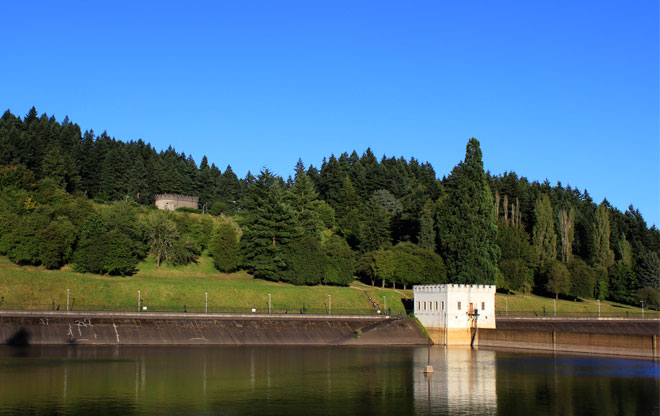
Reservoirs
The drinking water reservoirs are a major visual attraction for the park. The early 1900s pump houses are fashioned from concrete to look like medieval stone structures. The water is surrounded by decorative wrought-iron railings and pathways popular with joggers. Water flowing from one reservoir to another operates hydroelectric generators, supplying power to lights and equipment in the park.
Image: Jeff Schnabel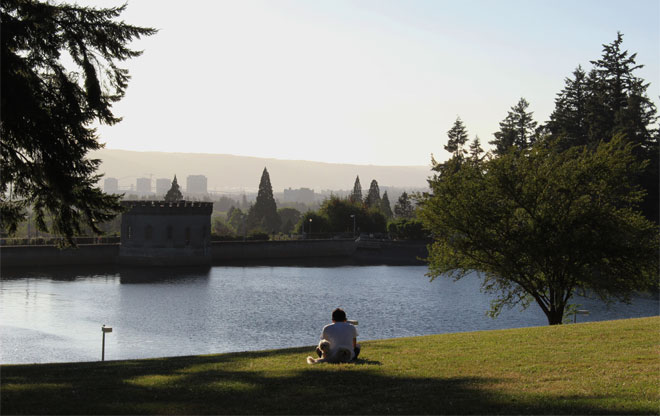
Sunset Spot
The hillside above the reservoirs is a superb location for watching the sunset over downtown Portland.
Image: Jeff Schnabel
Story Book Buildings
Story book-style restroom buildings dot the park's landscape. These structures are dwarfed by the scale of the mature trees that surround them.
Image: Jeff Schnabel
Standing Tall
The mature stands of trees throughout the park give the place much of its identity. They also do a tremendous job of screening nearby residences and areas where people exercise from the rest of the park.
Image: Jeff Schnabel
Not Just for Humans
In addition to supporting human activity, large areas of Mt. Tabor Park are protected to support a wide spectrum of wildlife.
Image: Jeff Schnabel